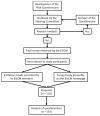A Global Survey on Diagnostic, Therapeutic and Preventive Strategies in Intensive Care Unit-Acquired Weakness
- PMID: 36013535
- PMCID: PMC9416039
- DOI: 10.3390/medicina58081068
A Global Survey on Diagnostic, Therapeutic and Preventive Strategies in Intensive Care Unit-Acquired Weakness
Abstract
Background and Objectives: Intensive care unit-acquired weakness (ICU-AW) is one of the most frequent neuromuscular complications in critically ill patients. We conducted a global survey to evaluate the current practices of diagnostics, treatment and prevention in patients with ICU-AW. Materials and Methods: A pre-survey was created with international experts. After revision, the final survey was endorsed by the European Society of Intensive Care Medicine (ESICM) using the online platform SurveyMonkey®. In 27 items, we addressed strategies of diagnostics, therapy and prevention. An invitation link was sent by email to all ESICM members. Furthermore, the survey was available on the ESICM homepage. Results: A total of 154 healthcare professionals from 39 countries participated in the survey. An ICU-AW screening protocol was used by 20% (28/140) of participants. Forty-four percent (62/141) of all participants reported performing routine screening for ICU-AW, using clinical examination as the method of choice (124/141, 87.9%). Almost 63% (84/134) of the participants reported using current treatment strategies for patients with ICU-AW. The use of treatment and prevention strategies differed between intensivists and non-intensivists regarding the reduction in sedatives (80.0% vs. 52.6%, p = 0.002), neuromuscular blocking agents (76.4% vs. 50%, p = 0.004), corticosteroids (69.1% vs. 37.2%, p < 0.001) and glycemic control regimes (50.9% vs. 23.1%, p = 0.002). Mobilization and physical activity are the most frequently reported treatment strategies for ICU-AW (111/134, 82.9%). The availability of physiotherapists (92/134, 68.7%) and the lack of knowledge about ICU-AW within the medical team (83/134, 61.9%) were the main obstacles to the implementation of the strategies. The necessity to develop guidelines for the screening, diagnosing, treatment and prevention of ICU-AW was recognized by 95% (127/133) of participants. Conclusions: A great heterogeneity regarding diagnostics, treatment and prevention of ICU-AW was reported internationally. Comprehensive guidelines with evidence-based recommendations for ICU-AW management are needed.
Keywords: critical care; critical illness myopathy; critical illness polyneuropathy; neuromuscular diseases; surveys and questionnaires.
Conflict of interest statement
N.G. received consulting fees from PIPRA AG, Zurich, Switzerland, unrelated to this work. M.M.B. reports personal fees from Nestlé Health Care, personal fees from Fresenius Kabi and personal fees from Baxter, outside the submitted work. S.J.S. reports grants from MSD (Haar, Germany), grants, personal fees and non-financial support from Fresenius (Bad Homburg, Germany), grants and non-financial support from Liberate Medical LLC (Crestwood, USA), grants and non-financial support from STIMIT AG (Nidau, Switzerland), non-financial support from Technical University of Munich (Munich, Germany), grants and non-financial support from National and international societies (and their congress organizers) in the field of anesthesiology and intensive care medicine, grants from Reactive Robotics (Munich, Germany) and grants and non-financial support from STIMIT AG (Biel, Switzerland), outside the submitted work. S.J.S. held stocks in small amounts from Rhön-Klinikum AG and holds stocks in small amounts from Alphabeth Inc., Bayer AG and Siemens AG; these holdings have not affected any decisions regarding his research or this study. F.K., M.-C.O., C.H., S.W.-C. and J.E. declare that they have no competing interests within the present study.
Figures
References
-
- Ali N.A., O’Brien J.M., Hoffmann S.P., Phillips G., Garland A., Finley J.C.W., Almoosa K., Hejal R., Wolf K.M., Lemeshow S., et al. Acquired Weakness, Handgrip Strength, and Mortality in Critically Ill Patients. Am. J. Respir. Crit. Care Med. 2008;178:261–268. doi: 10.1164/rccm.200712-1829OC. - DOI - PubMed
-
- Sharshar T., Bastuji-Garin S., Stevens R.D., Durand M.-C., Malissin I., Rodriguez P., Cerf C., Outin H., De Jonghe B. Presence and severity of intensive care unit-acquired paresis at time of awakening are associated with increased intensive care unit and hospital mortality. Crit. Care Med. 2009;37:3047–3053. doi: 10.1097/CCM.0b013e3181b027e9. - DOI - PubMed
-
- Sidiras G., Patsaki I., Karatzanos E., Dakoutrou M., Kouvarakos A., Mitsiou G., Routsi C., Stranjalis G., Nanas S., Gerovasili V. Long term follow-up of quality of life and functional ability in patients with ICU acquired Weakness—A post hoc analysis. J. Crit. Care. 2019;53:223–230. doi: 10.1016/j.jcrc.2019.06.022. - DOI - PubMed
MeSH terms
LinkOut - more resources
Full Text Sources



